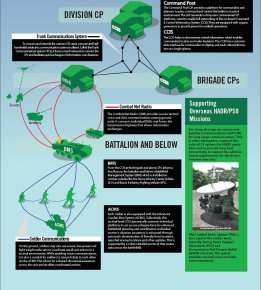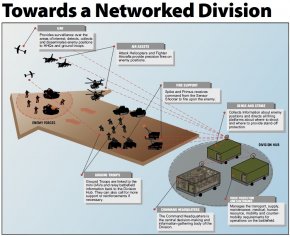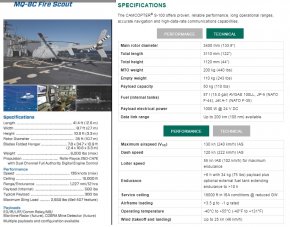RSTA - Reconnaissance, Surveillance, and Target Acquisition
Bear in mind that, in a modern battlefield, a Signals coy does more than just connect the various parts of a division. Signals personnel can detect the location of opposing transmissions, intercept them, decode or relay the transmissions' content onwards, scramble them, or use them to predict enemy actions.
My cousin spent his NS in Signals (I forget which camp) and he said that was what he did most days. Track signals from a bunch of different sources and practice on them. I'm sure he did more, but we don't talk much about his NS. He did tell me that there was a building for the super hush-hush stuff and only regulars were allowed in there. So, I would say that a Signals coy in the RSTA role is invaluable since it allows the SAF to intercept enemy signals and give forewarning to the main forces. That sort of capability is not something a section or a platoon can properly juggle. Ideally, you want at least a couple sections on each task so that the operators can rotate and compare notes.
The SAF's doctrine is for a connected battlefield. The moment something is discovered, that information is present on the whole network down to the section level. Visual contact does not have to be achieved by the RSTA or Signals elements. As Lone Ranger mentioned, there is a Tactical UAV coy that can achieve this. In this manner, you can have up to three corroborating reports of enemy activity.
I cannot speak to your hypothetical military's doctrine, organization, or equipment choice. All I can say is that information for the SAF can come from outside the divisional structure as well. For example, Guards or Commando forces may relay information to the information network. Or RSAF units may report something. Maybe the RSN spotted something. Maybe 2PDF received some intelligence and is passing it along. Information is key because if you can get inside the opponents' chain of relaying, receiving, processing, and acting on intelligence (there's a specific phrase for this, which I have forgotten), then you can act before your opponent can respond effectively. For example, the German invasion of France in 1940 was so swift that the French command system was unable to respond fast enough to the German assaults. The SAF desires the same capability - to be able to act fast enough that the opponent is blind-sided. Signals, RSTA, etc. are all different pieces on the chessboard which are meant to work in unison with chess pieces from every other Singaporean chess piece, not independently or within the limits of their "unit".
Bear in mind that, in a modern battlefield, a Signals coy does more than just connect the various parts of a division. Signals personnel can detect the location of opposing transmissions, intercept them, decode or relay the transmissions' content onwards, scramble them, or use them to predict enemy actions.
My cousin spent his NS in Signals (I forget which camp) and he said that was what he did most days. Track signals from a bunch of different sources and practice on them. I'm sure he did more, but we don't talk much about his NS. He did tell me that there was a building for the super hush-hush stuff and only regulars were allowed in there. So, I would say that a Signals coy in the RSTA role is invaluable since it allows the SAF to intercept enemy signals and give forewarning to the main forces. That sort of capability is not something a section or a platoon can properly juggle. Ideally, you want at least a couple sections on each task so that the operators can rotate and compare notes.
The SAF's doctrine is for a connected battlefield. The moment something is discovered, that information is present on the whole network down to the section level. Visual contact does not have to be achieved by the RSTA or Signals elements. As Lone Ranger mentioned, there is a Tactical UAV coy that can achieve this. In this manner, you can have up to three corroborating reports of enemy activity.
I cannot speak to your hypothetical military's doctrine, organization, or equipment choice. All I can say is that information for the SAF can come from outside the divisional structure as well. For example, Guards or Commando forces may relay information to the information network. Or RSAF units may report something. Maybe the RSN spotted something. Maybe 2PDF received some intelligence and is passing it along. Information is key because if you can get inside the opponents' chain of relaying, receiving, processing, and acting on intelligence (there's a specific phrase for this, which I have forgotten), then you can act before your opponent can respond effectively. For example, the German invasion of France in 1940 was so swift that the French command system was unable to respond fast enough to the German assaults. The SAF desires the same capability - to be able to act fast enough that the opponent is blind-sided. Signals, RSTA, etc. are all different pieces on the chessboard which are meant to work in unison with chess pieces from every other Singaporean chess piece, not independently or within the limits of their "unit".




